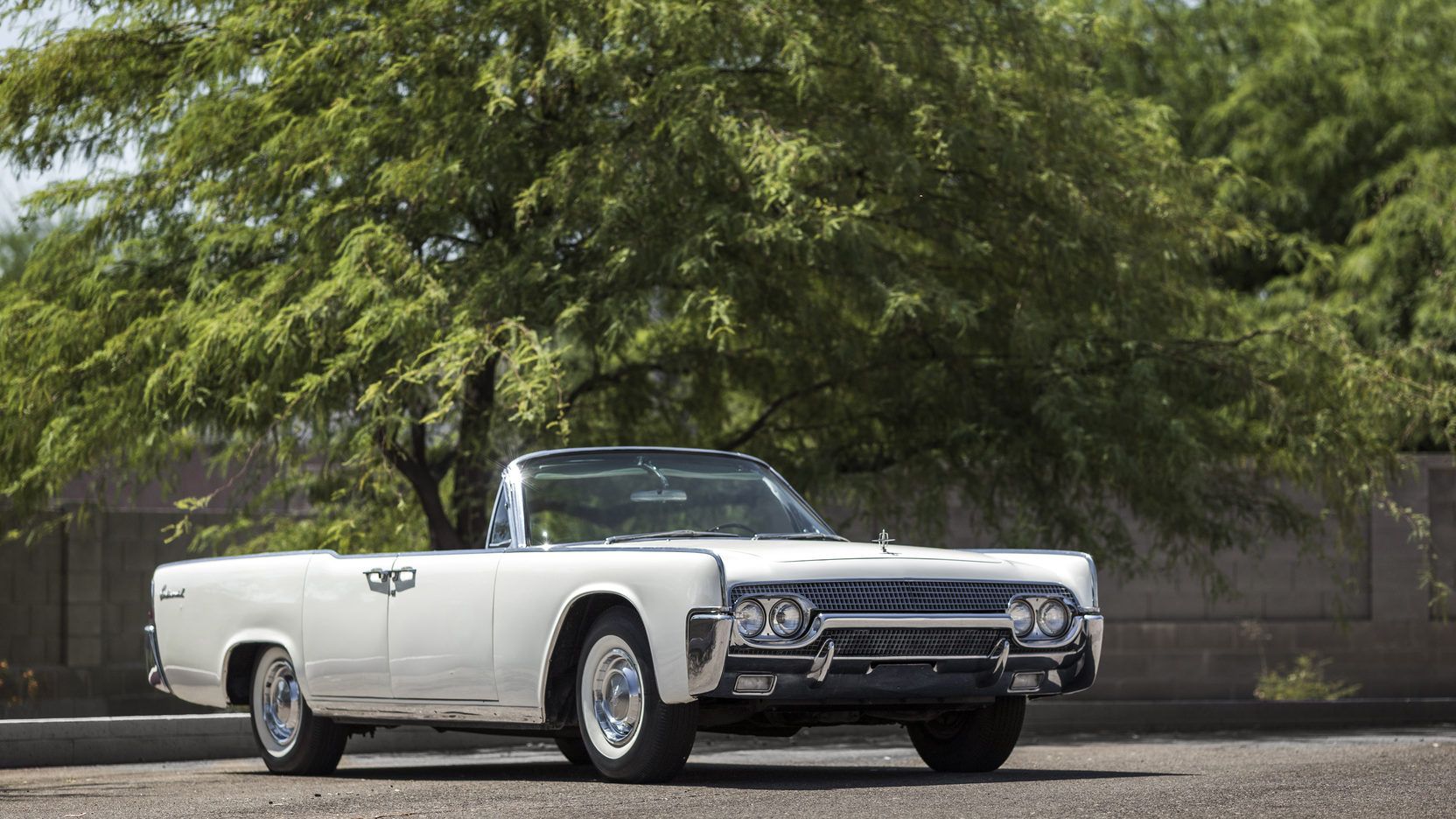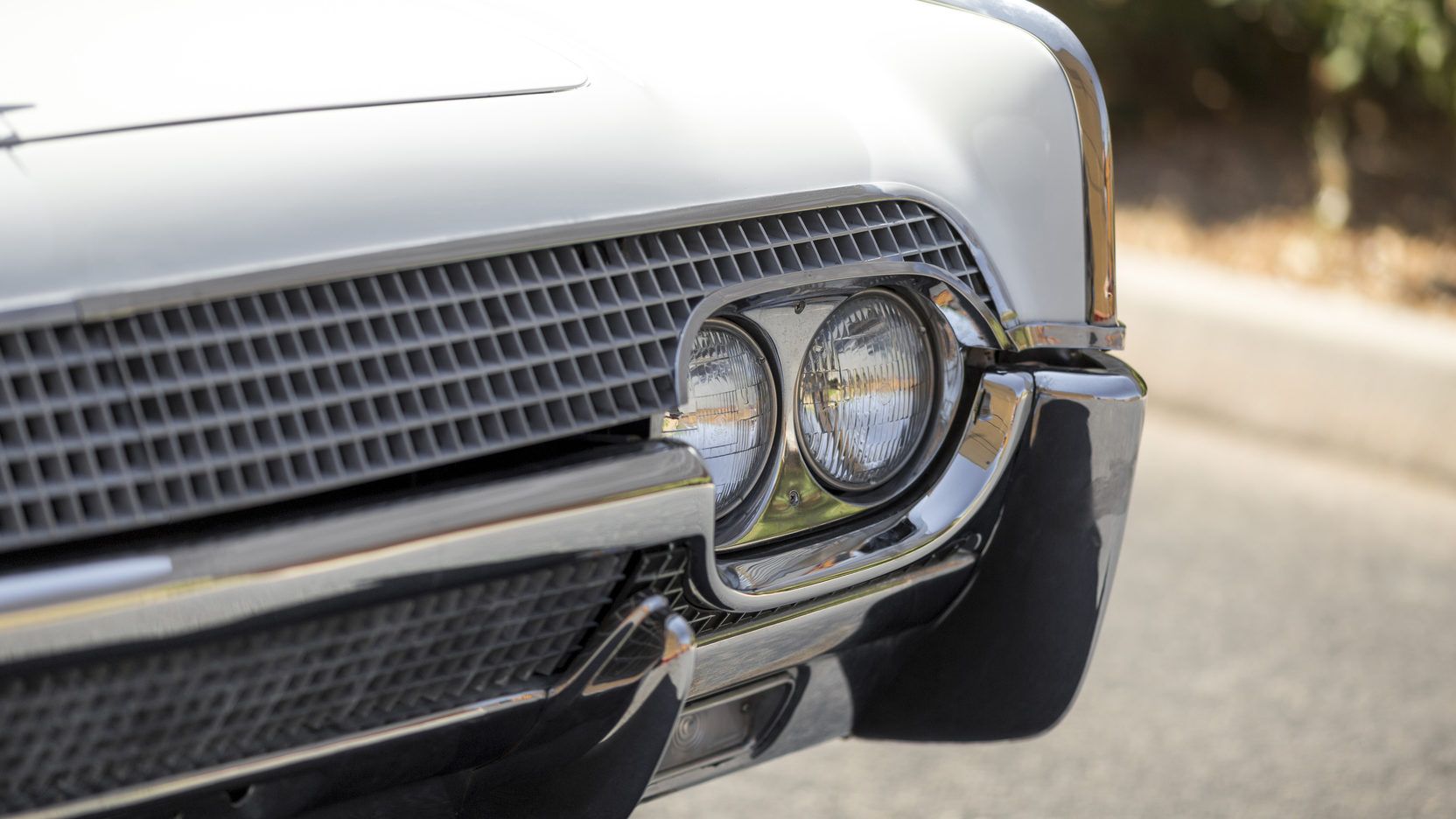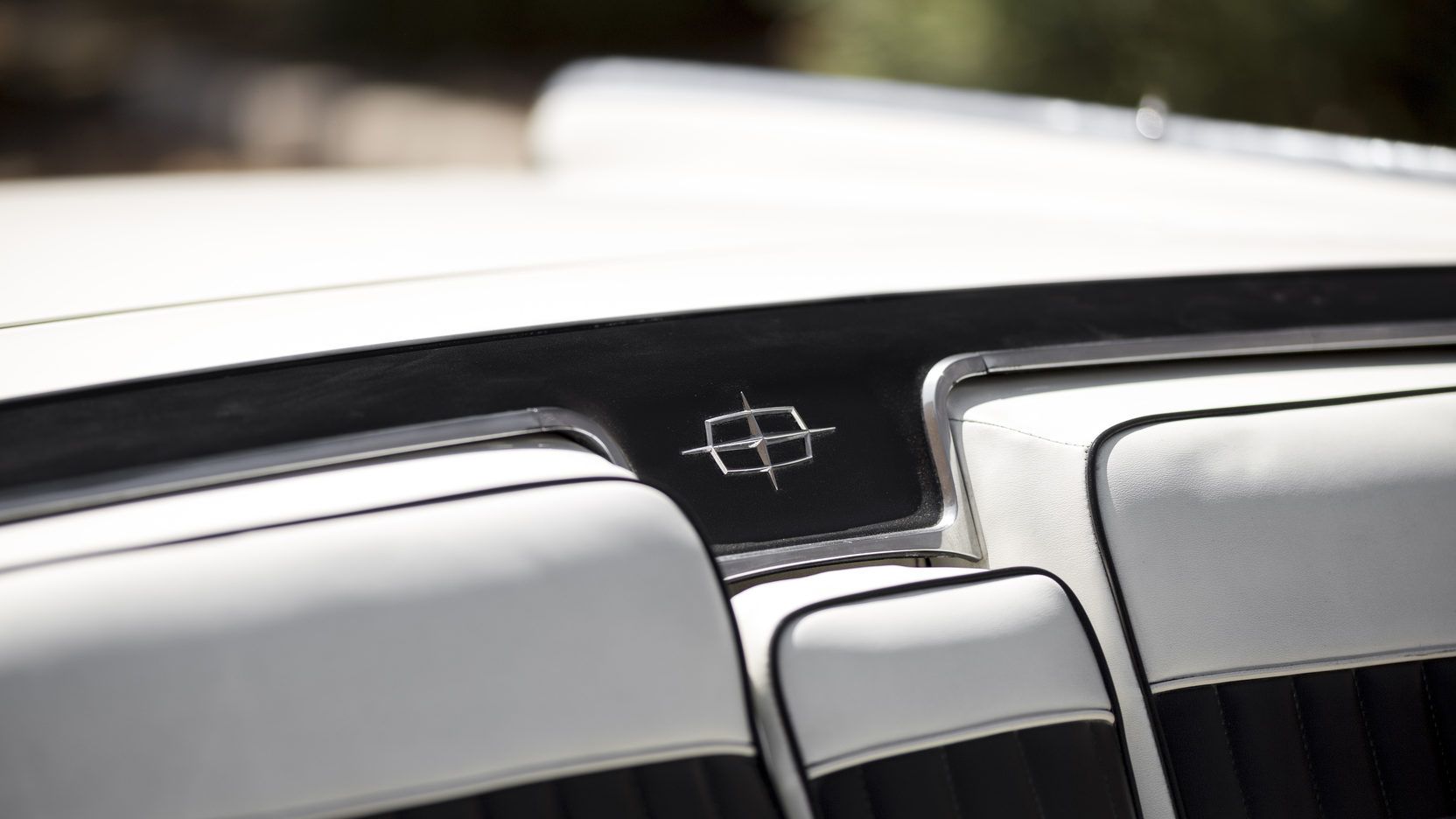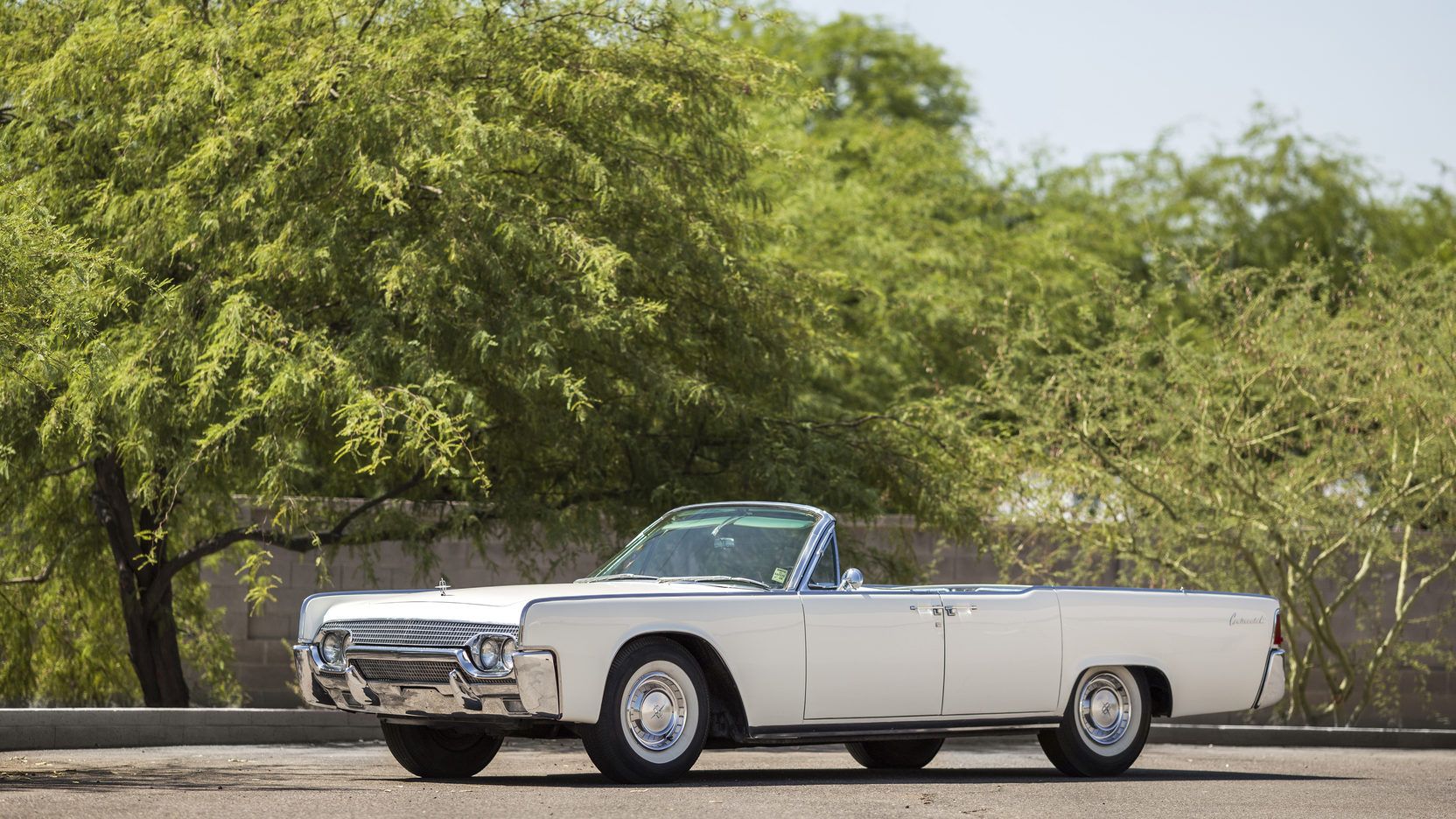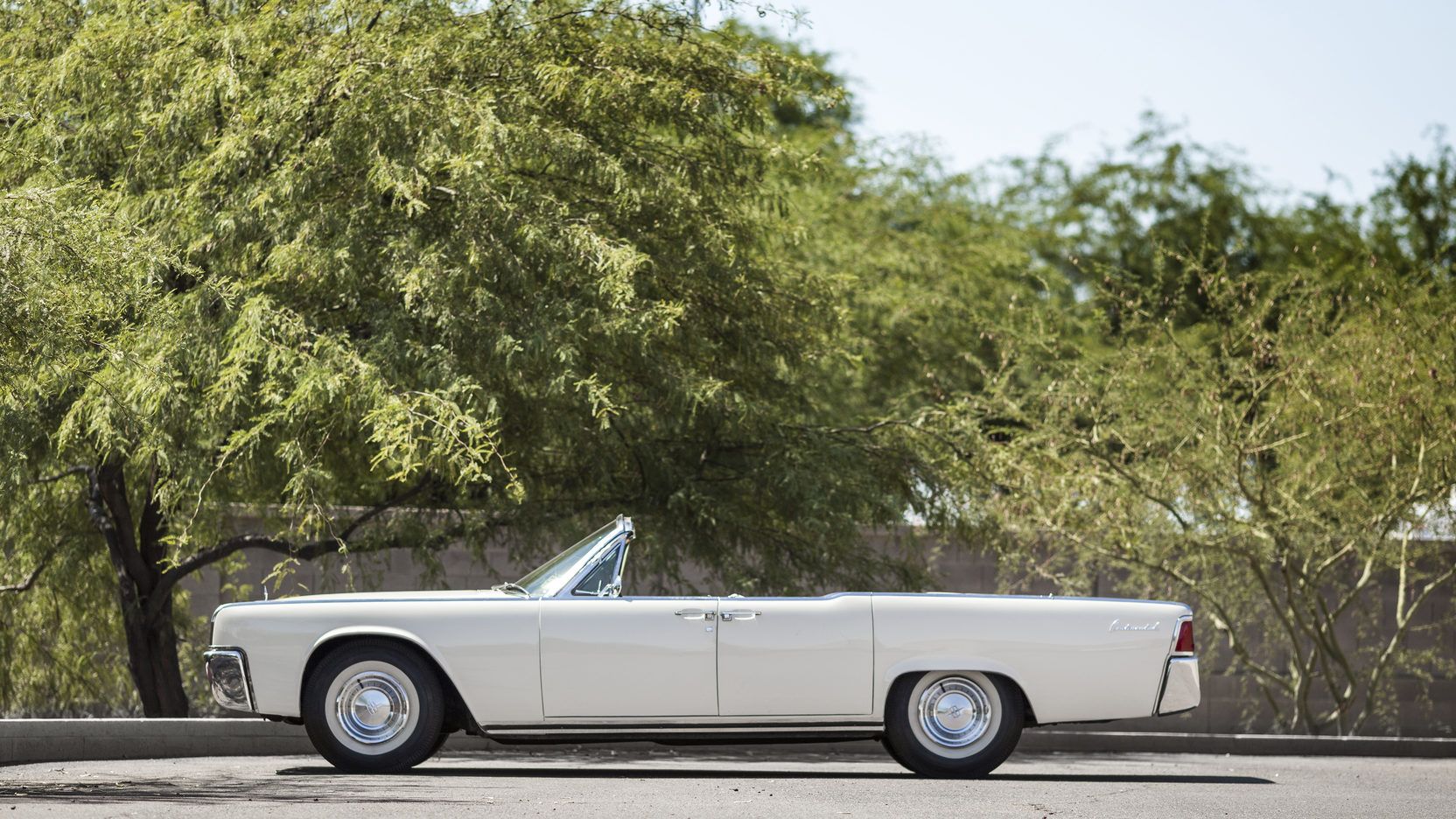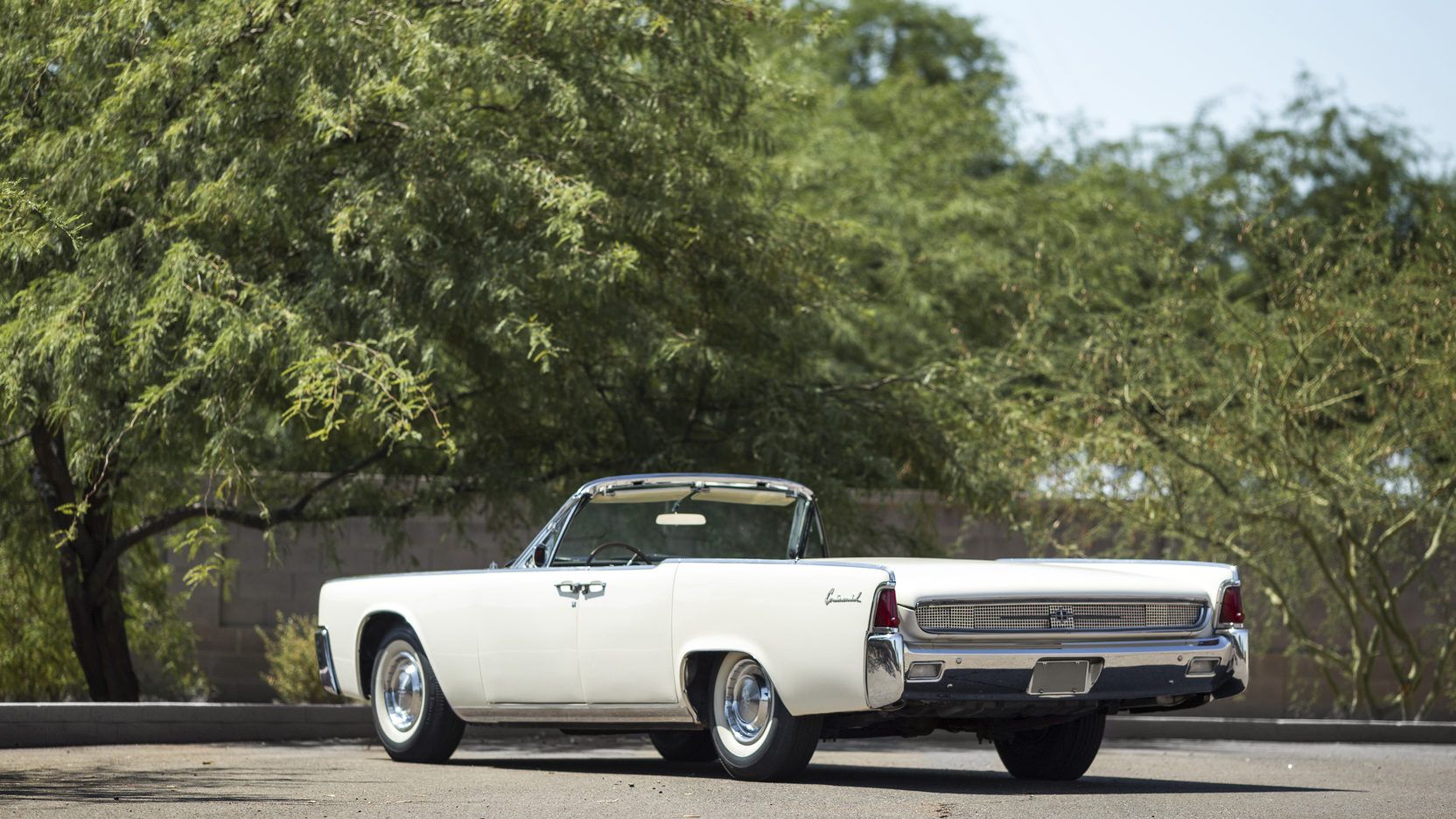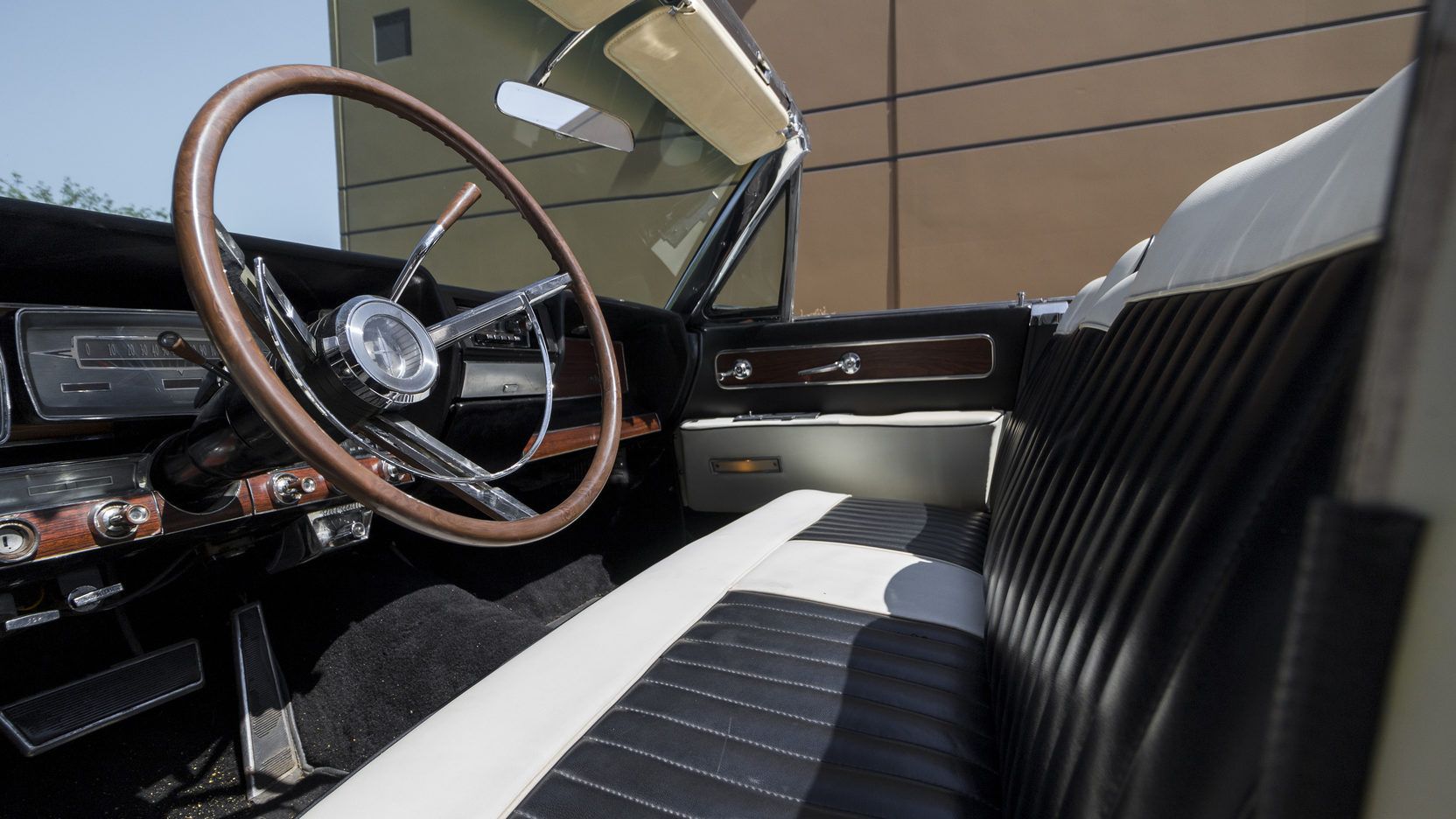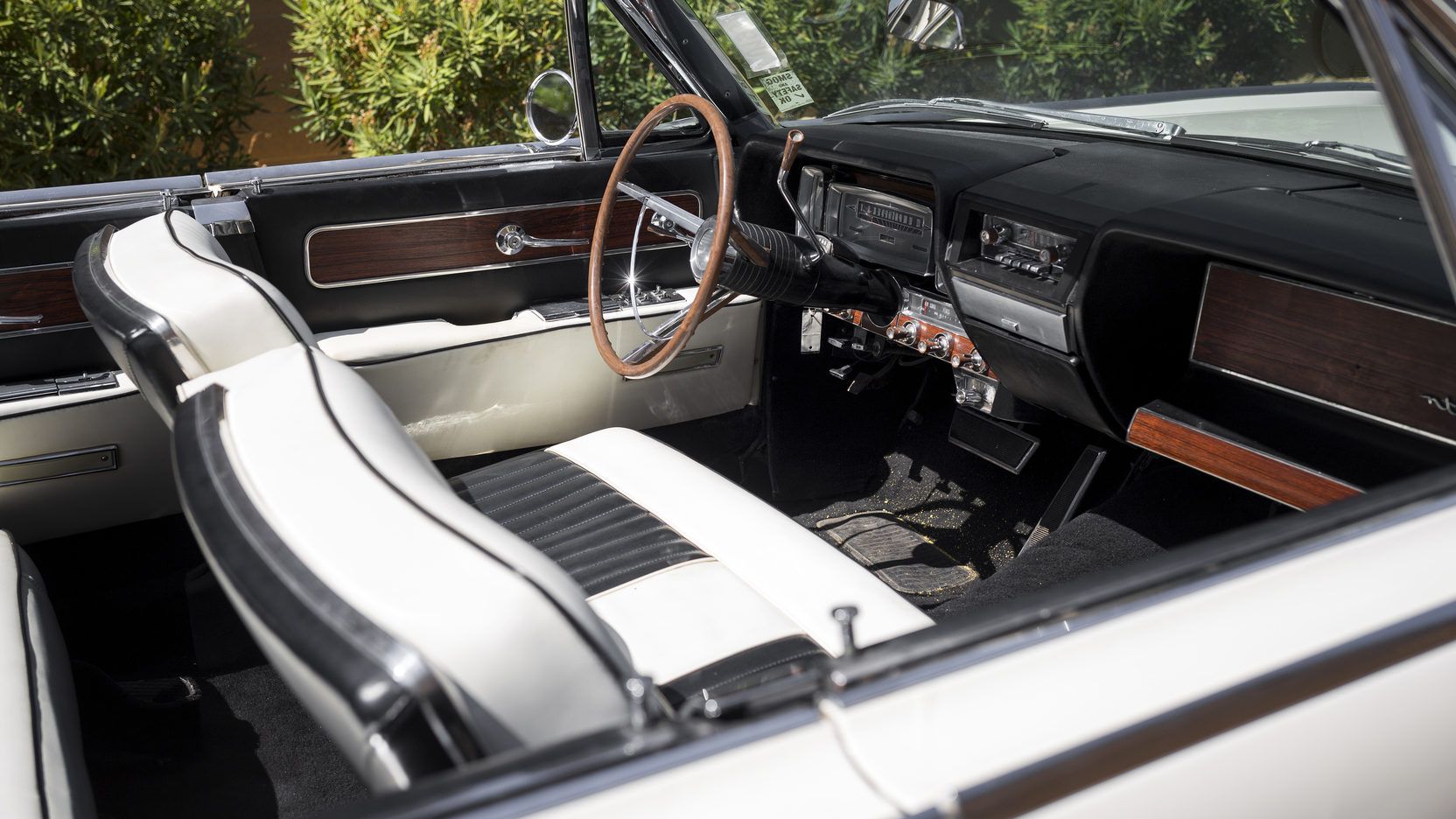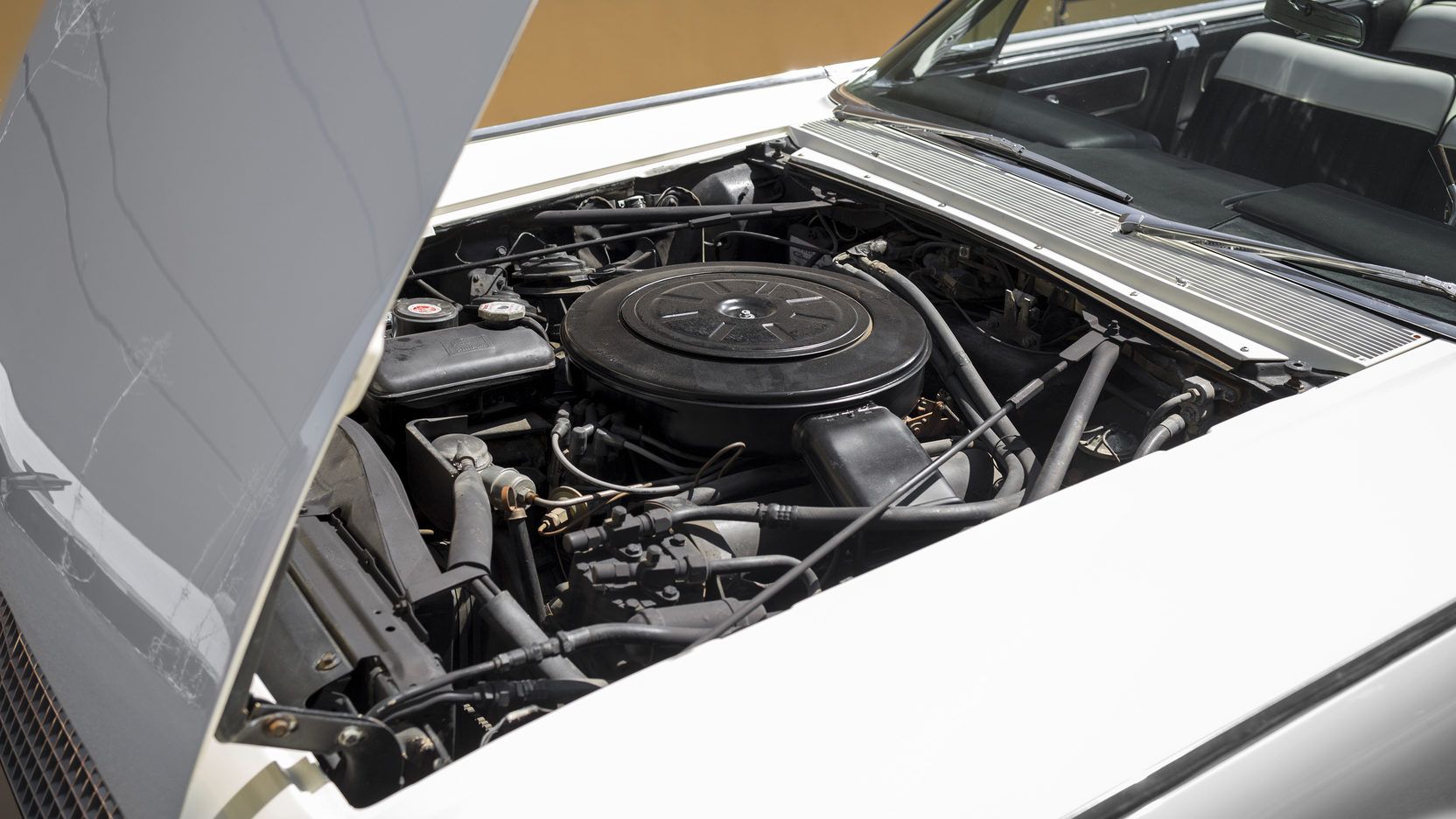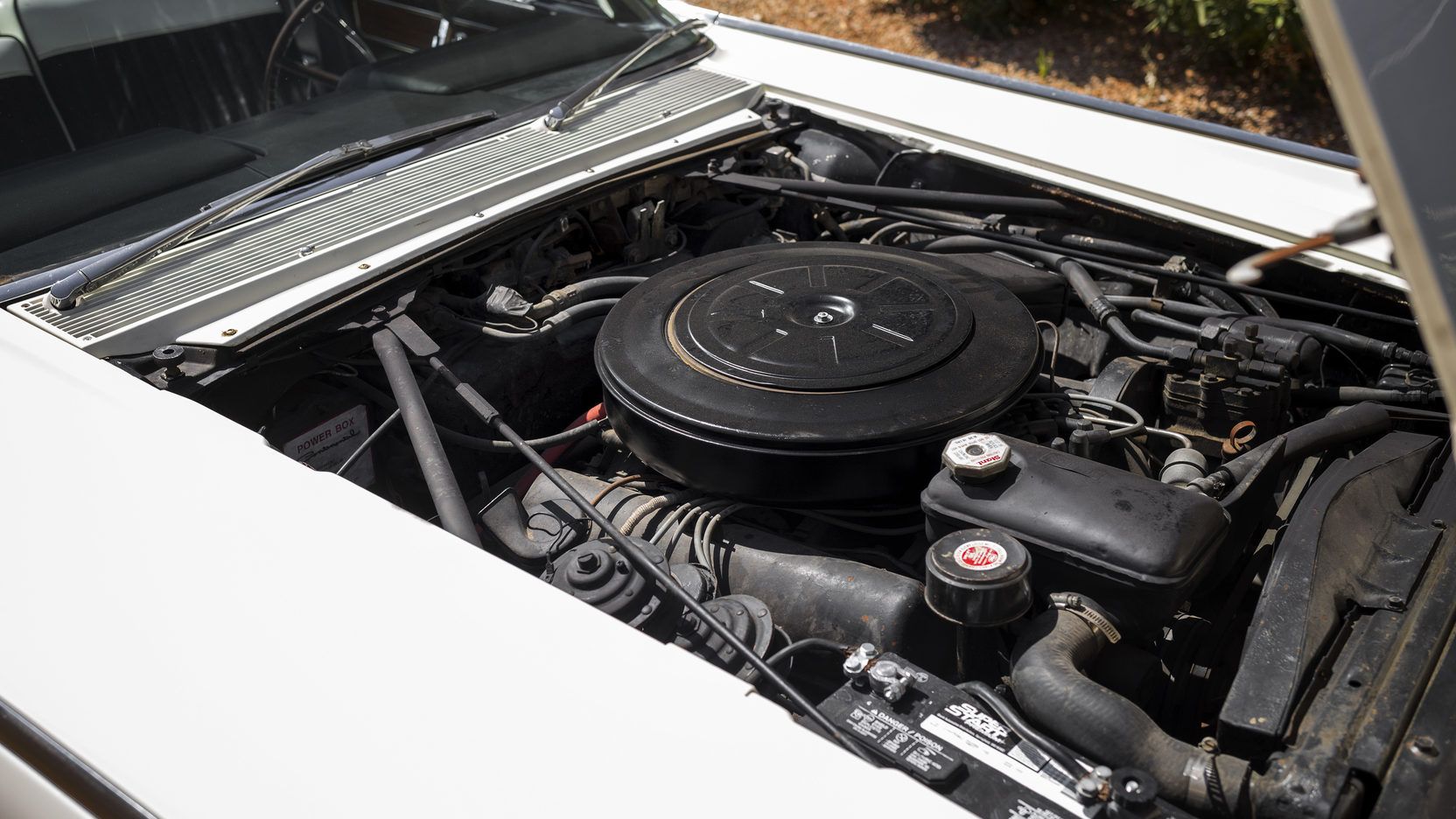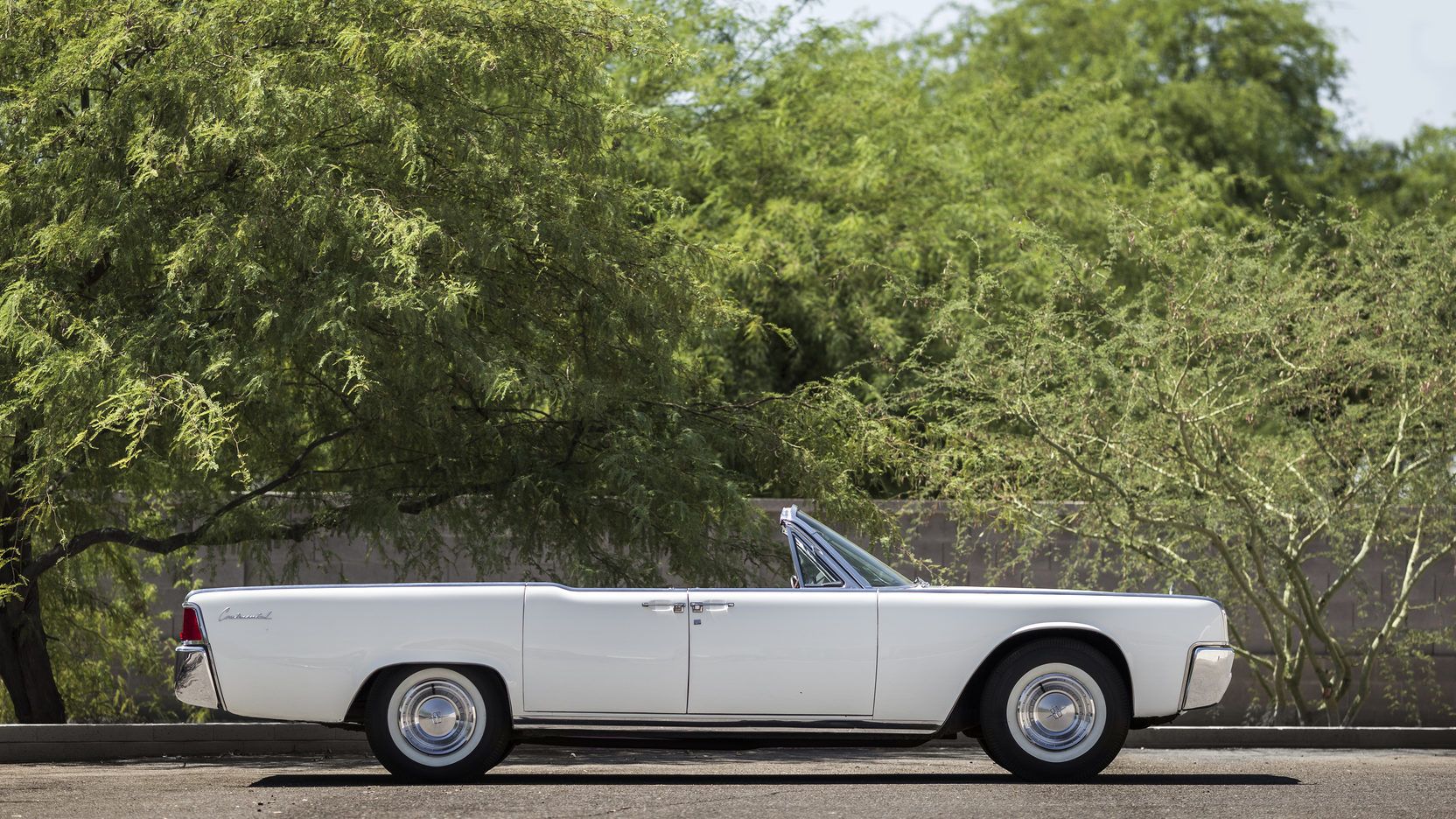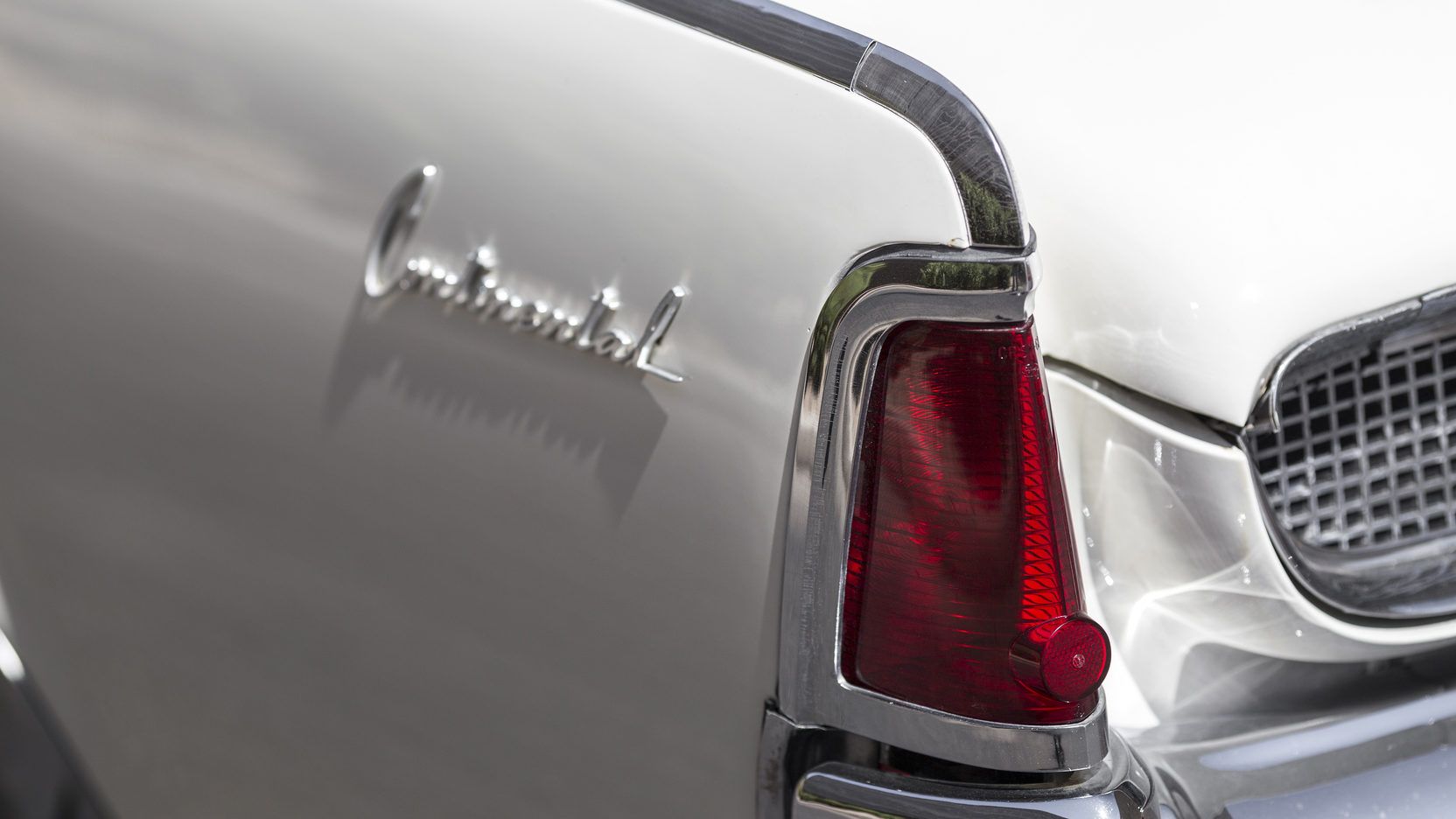Some cars are special because of their racing background, recalling a moment when man and machine triumphed in a battle of speed. Other cars are special for their heritage, representing a particular slice of time that encompasses an experience from long ago. This car is special because of its previous owner. You see, the bright white slice of Americana you see before you was once the personal transportation of Jacqueline Kennedy Onassis, the wife of John. F. Kennedy and First Lady of the United States. This Lincoln Continental was parked at the White House garage and used by Jackie O during JFK’s tenure as the 35th President of the United States, and perfectly encapsulates that period through it’s broad, simple design, boat-like on-road demeanor, and seemingly endless style. What’s more, it’s going up for sale later this month.
This luxury full-size four-door carries the VIN number 1Y86H420678, and is a certified history lesson on wheels. It’s seen only one other owner besides the trend-setting First Lady, and it’s received an older restoration to keep it fresh.
So what’s Mrs. Kennedy’s previous personal ride really like? Read on to find out.
Continue reading to learn more about this unique 1961 Lincoln Continental Convertible.
1961 Lincoln Continental Convertible
- Make: Array
- Model: 1961 Lincoln Continental Convertible
- Engine/Motor: V8
- Horsepower: 300
- Transmission: Three-speed automatic
- [do not use] Vehicle Model: Array
History And Background
The Continental nameplate was first put to use in 1939. This first generation of the car was subsequently discontinued in 1948, but then the name was once again unearthed in 1956 for the second generation. The second-gen Continental enjoyed a rather limited lifespan before it was replaced by the third generation in 1958. Then came the fourth generation in 1961, which was extended until 1969. In 1970, the fifth generation was introduced, lasting for another 10 years before the sixth gen was came about in 1980. The sixth-gen car only lasted a year, skipping 1981 before the seventh generation was introduced in 1982. This led to the ninth and tenth generations, but the name was dropped in 2002, only to once again reemerge in 2016 for the latest revitalized tenth generation
This particular example hails from the fourth generation. The fourth-gen uses a design that was originally slated for the Thunderbird, but after the design was rejected, the Ford Motor Company brass decided to give it another look. After deciding it was worth keeping, Lincoln put it use it for the Continental nameplate.
It was at this time that the Lincoln lineup was consolidated, with the Continental relegated to a four-door sedan and four-door convertible body style. When it was first introduced, the fourth-gen Continental made a huge splash with the buying public and critics, selling in droves the very first year it was released.
Undoubtedly, the enthusiasm was helped by the car’s association with Jacqueline Kennedy. In 1961, Ford decided to loan the White House a Continental as JFK was the sitting president, and given Mrs. Kennedy’s connection with high style, the car enjoyed a similar perception.
The make it appropriate for a First Lady, this Continental was outfitted with the requisite Secret Service gear, then put into the White House garage and made available for personal use by Mrs. Kennedy.
Afterwards, Steuart Ford in Lanham, Maryland, bought the car. There it’s remained ever since, until now.
Now it heads to the central California coast to find a new home after it hits the block at the Mecum Collector Car auction.
Exterior
The fourth-generation Lincoln Continental was originally designed by one Elwood Engel, the design vice president at Ford. The Continental has been called Mr. Engel’s “magnum opus,” although the design has also been attributed to the work of John Orfe and Howard Payne, both of whom helped put together the original clay model in 1958.
Taking a step back, the design was considered a clean break from past conventions, bringing a fresh appearance somewhat devoid of the extra chrome and flourishes seen in auto designs previously. There are enormously broad, flat surfaces from front to back, which are most noticeable in the profile. Embellishment lines are almost non-existent, giving the whole thing an almost antiseptic appearance.
The front fascia is a bit of a break from this, offering up a bit more superfluous styling than the rest of the vehicle. The grille seems to swallows up the entire front end, offering up a mesh metal insert with squared slates. Bisecting this is a single chrome bar that connects the headlights, and the grille below is angled down towards the rear of the car. More chrome elements are used in the bumper corners.
This look is mimicked in the rear, where we find another metal mesh insert, chrome bumper, and polished side embellishments. The taillights complete the rear fins, and are also surrounded by chrome.
One of the most noteworthy features of the fourth-gen Continental were the rear suicide doors – that is, doors that use hinges located at the rear, enabling them to open in a mirrored fashion compared to the front doors.
While undeniably cool and stylish, this feature was actually added to the Continental as a practical means to aid ingress and egress to the rear bench. During the car’s development, engineers noticed they were struggling with access to the rear seating area, so they implemented the same door design as was used previously on the 1950 Lincoln Lido and Lincoln-Zephyr sedan, no to mention other examples from the ‘20s and ‘30s.
Also of note is the power convertible top. What’s more, the Continental might look pretty enormous to modern eyes, but it was actually considered rather small for its time.
Back to this example. Jackie O’s Continental arrives like a wave of white, with the body panels complemented by whitewall tires. The wheels include large covers made from stainless steel, completing the exterior styling package. When you see it in the sun, with the top down, it just looks correct.
|
Wheelbase |
3,124 mm (123 inches) |
|
Length |
5,395 mm (212.4 inches) |
|
Width |
1,996 mm (78.6 inches) |
|
Height |
1,361 mm (53.6 inches) |
Interior
The all-white exterior is balanced by an interior incorporating both black and white upholstery. Up front, we see a large bench seat stretching from door to door, with the leading edges in white and the inner sections in black. Rectangular shapes abound, including the polished trim in the door panels and the gauges in the dash. Extra classiness is added with the use of California Walnut trim, found on the enormous thin-rimmed steering wheel, dash, and on the doors.
The speedometer registers velocity like a radio dial, sweeping left to right as the car’s momentum builds. Lincoln also added a “Door Ajar” warning light to the dash, a safety feature implemented as part of the inclusion of the rear suicide doors.
Further features include cruise control, an available option for the car at the time, plus power windows and power locks.
Unfortunately, all the Secret Service equipment and under-dash radio that were installed on the car when it was delivered to the White House have been disconnected, which isn’t unexpected, but would be much appreciated in adding that extra layer of authenticity.
Drivetrain
Take a peek under that Lincoln badge, and you’ll find a 430-cubic-inch (7.0-liter) V-8 engine, which produced 300 horsepower when it was first installed. Routing the muscle to the rear axle is a three-speed automatic transmission.
This is classic American power – huge, eight-cylinder powerplant, dumping a ton of torque directly onto skinny tires at the back.
Shots of the engine reveal this Continental to be a little rough around the edges, at least compared to the high-caliber of machinery normally seen at the Mecum auctions. There’s dirt and grime and possibly even a little rust – but that’s not necessarily a deal breaker. This thing is more about the allure of who the car carried, not what it was packing under the hood.
Chassis And Handling
Like a true luxury liner, this Continental received power steering and power brakes, making it a breeze to drive. However, don’t think for a second that it can do anything other than cruise – the whole thing weighs a titanic 5,215 pounds.
Prices
Jackie O’s Continental will be found later this month in Monterey, California, at the Mecum Classic Car Auction as Lot S39. The lot includes the original documentation letter from Ronald W. Young, the Vice President of the Steuart Ford dealership, who bought the car after its tenure at the White House.
The car’s estimated value is between $100,000 and $125,000, figures that speak to the car’s previous ownership, rather than its overall condition or rarity (Lincoln sold a ton of fourth-gen Continentals, with 25,160 units moved just in the first year of production).
Competition
Porsche Bisimoto 911BR
It’s difficult to find the right match for a car like this, but this Steve McQueen-inspired Porsche might fit the bill. It’ll go up for auction at the same Mecum event as the above-featured Lincoln, and although the King of Cool didn’t own it, it’s definitely something that would have occupied his garage.
Read the full review here.
Conclusion
Out of the Lincoln Continental’s extended history, the fourth-generation variant is considered to be the most desirable. The look, the sound – it’s all exactly as it should be, as evidence by its use in movies like Animal House, Goldfinger, and The Matrix. It’s an absolutely iconic American luxury mobile, and the fact that this particular example was owned by First Lady Jackie Onassis makes it that much more special.

